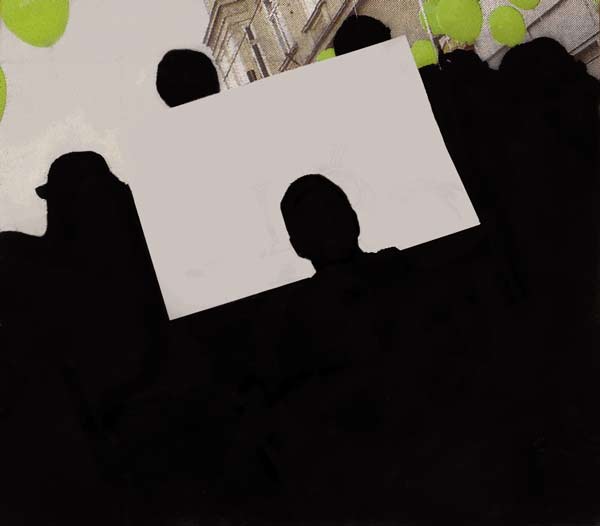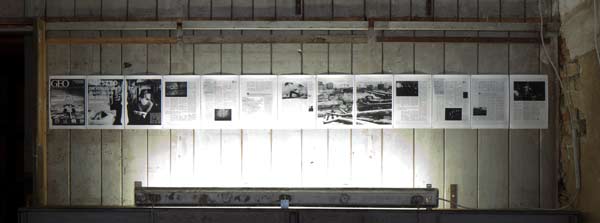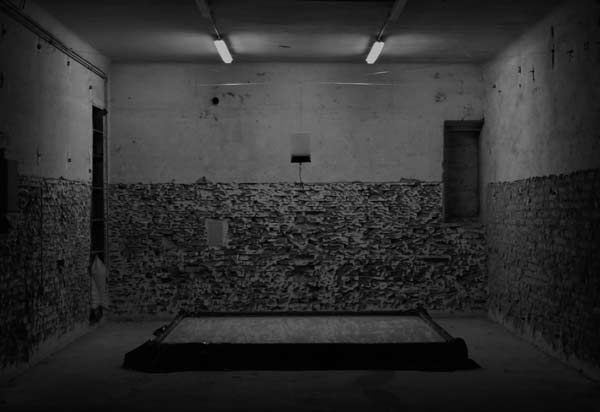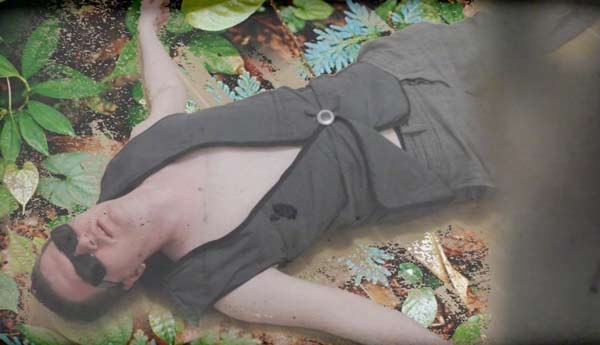Editorial
Issue 8, November 2011
by Protest and Stagnation / Jakob Brossmann, Cornelia Lein, Alice Neusiedler, Hannah Rosa Öllinger, Manfred Rainer, Thomas Streitfellner, Pawel Szostak
Editor's Note: for more info on this project, please go to www.protestundstillstand.at
Introduction
This text was written by seven participants of the self organized research project “Protest and Stagnation”.
“Protest and Stagnation” consists of individual participants, bound together by an urge to understand the will to be a part of a group and to respect each others' diverse opinions.
We emphasize this at the beginning, because when we initiated the project we had in mind the mistrust of the European Left of every identification with a group. This reflection is deeply rooted in our generational experience- a reaction against the postmodern pledge of a freedom in a hyper individual society. Thus it was important for us to find a way to work together in a balance of identification both as an individual and as this specific group.
Two years ago, Vienna saw its biggest student protests in decades. The Audimax Movement - named after the lecture hall occupied by students at the University of Vienna - was at the heart of a new uprising of European students. (Though we do not want to stylize it as the beginning, nor do we want to construct linear causalities between the particular national movements.)
This important event is not the topic of this article, though it is its starting point. Others have written about the events that lead to the occupation, the influence the movement had and the new forms of participatory democracy explored in the Audimax (e.g. Lina Dokuzovi? , Lessons Learned: Struggles and Knowledges of Dissent, http://eipcp.net/transversal/1210/dokuzovic/en).
Nevertheless it is important to mention because of the the remarkable momentum and the self generated power of the Audimax protests. What we didn't dare think before seemed suddenly possible, and questions that hadn't been asked for so long became relevant again.
Perhaps their biggest achievement was to start a discussion about the basic principles of democracy and the values of Austrian society. The value of education, self-education, knowledge, as well as solidarity and transparency became topics of everyday questioning. It was necessary to act and we tried to answer these questions. Yet as the occupations continued, the questions and their importance only increased.
As long as everything went fine, relevant questions were easy to answer. In decentralized working groups and informal talks, at the plenum1 and while acting, we developed a new form of discourse. Our questions were based within the framework of our actions - our actions and those of our friends and opponents.
Given that the protests have been described as a failure, the practice lost its basis.
Most of our questions remain unanswered. The urgency to answer them is no longer temporal, but rather essential.
With this in mind, we initiated the interdisciplinary project “Protest and Stagnation”. Our goal was to bring together students from different universities in Vienna to discuss the problems and possibilities for contemporary wide-scale protest. We wanted to provide a space for inquiry without being limited by the necessity of action. We took a step back in order to enable reflections that are not possible during an actual protest. In fact we wanted to discuss the framework of protest itself.
The Project
The project was initiated by four students and started with an open call for proposals mailed to all major Viennese Universities. All students were invited to apply by sending a small note of interest. In March 2011 we held our first meeting with a group of thirty at our home base in the University of Applied Arts.
We then met once weekly for the duration of the project.
This forum enabled us to delve deeply into the subject matter. Discussions, feedback on the current process of work, film-screenings (f.e. “November”by Hito Steyerl, “Les Amants Reguliers” by Philippe Garrel) visual and text impulses – gave an opportunity for each member of the group to not only participate but also to form content.
As we come from different fields of study, interdisciplinary work not only implies having different viewpoints and differing forms of critique. Thus we encountered our differing starting points, and the particular focuses that are linked to both educational and individual backgrounds. These came into sharp focus in that we come from both science and the arts.
As the months went by different groups formed to produce scientific and artistic work for a concluding exhibition. In the following a selection of these ideas and the appending artworks presented in the exhibition are discussed by participants of these subgroups.
The aesthetic of a protest (2) - by Manfred Rainer
The problem of the aesthetics of a protest was one of our most discussed topics. Surprisingly the theme combines many several topics: Protester ideologies, historic paradigms, opinions towards utopian beliefs, individuals willingness to behave violently or peacefully- are all imminent within protestors' outfits, posters, logos, flyers and the PR . Hence these all can be aesthetically deconstructed .
A bit over a year ago I came across a protest poster in Dublin Ireland that caught my attention. It appealed for a demonstration against government's reaction to the financial crisis.
The poster was yellow with pink letters that said: Never mind the Bankers. We don’t pay for your crisis!

untitled, Manfred Rainer, digital print, 2011
The poster was based on the iconic Sex Pistols LP “Never Mind the Bollocks, Here’s the Sex Pistols.”
It clearly showed an identity crisis of protest.
Suspecting that this was not a singular case, I began looking more carefully at the design of protest posters, flyers, logos and websites . The nostalgia for past protest movements can be found in a majority of contemporary protests.
What struck me was that these were the self representation of movements and their participants. I found contemporary posters ranging from; classic protest iconography like fists and fires over communist icons, to quotes of the youth culture (hippie, 1968 and punk). Though occasionally there were new, intelligent and funny designs, it was obvious that inventive design was lacking. Most of these quoted movements are rooted in modernity and thus they deeply believe in utopia.
But problematically, as Liam Gillick points out in his text For a Functional Utopia. “to quote a modernist utopia in a post-modern time renders the movement a nostalgic and ironic statement of failure.”
This explains a common Austrian reaction to much of the protests, “Why should that work? It didn’t work the last time either!”
A flyer that impeccably quotes communist agitprop design- with red stars, cyrillic-style typography and a Photoshop raster to pretend its printed on an old hand-printing machine clearly evokes strange, fake, historic connotations. Though it might satisfy a nostalgic communist ideal, only a very small portion of people can identify with it. What is, after all the relation between protesting for a better educational system and communist agitprop of the 1930s? If any teenage rebel listens to the same music his/her parents did 30 years ago, the gap should be a lot more obvious.
On Public Space - by Cornelia Lein

no title, Cornelia Lein, digital collage, 2011
If there exists both public and private space, how can they be defined and distinguished from each other? To what extend could these spaces influence the failure or success of future forms of protest and therefore democracy? Throughout the Viennese student protests these questions increasingly occurred to me. It was remarkable that though the routes that f demonstrators followed were ostensibly in order to address the “public“ and the “government“, they were truthfully in areas where a wider span of the population could not be directly reached.
To address this, I started an examination of protest photography. I focused on photographs published by „Der Falter“, one of Austria’s few independent left/liberal weeklies. After I had collected a decent amount of press cutting I chose to work with images of demonstrations that remained readable as protest once they were detached from their article. Interested in the meaning production of these images I subjected them to compositional analysis. All the photographs had three major elements in common: protesters, protest symbols (banners, flags, etc.) and relational space (streets, government buildings, etc.). Through the simple act of overpainting these different parts I tried to explore their connection to reveal their symbolic importance. The relations between mass and individual, presence and absence became visible. In the final show „Protest and Stagnation“ I made an installation of two diascopes each projecting the same slides so the images overlapped on the wall. Visitors could watch the slide show by using the two remote controls.
Eventually the aesthetic decisions and the set the demonstrators had chosen merged in a mediated image, that influenced the perception of protest in general.
Utopia and Ideals - by Jakob Brossmann

Mjeszto, Jakob Brossmann,installation view, 2011
In defiance of the political reality, I discovered a basic need for determining my own utopian ideal.
Whereas the immediacy of anger and outrage brings one into an active position, I felt almost anxiously aloof from developing my ideals, not in terms of opposition but of a very basic understanding of my own needs and political position.
As children of a supposedly post-utopian era, we have an immanent fear of the ideal. But still there is this desire that makes me believe that utopia is one of the most important topics in our examination during Protest and Stagnation. While asking myself how to overcome my fear and shyness of formulating ideals, I realized that most utopianists used a trick to allow themselves the freedom to figure it out. Thomas Moore, the father of the word “utopia”, uses the literary device of an imaginary stranger's travel report. 500 years ago= even Moore was afraid of being seen as a naïve dreamer. Until today, constructing a world is more risky then deconstructing it: what lies in pieces in front of you will not fall apart.
But when you begin building a world of words and ideas, it’s not only unstable, it quickly shows its and therefore your imperfections . This is reason enough to invent the narrating traveller. So I started to write my own Utopia and invented a Siberian girl to tell me the story of her hometown - Mjeszto - which translates as “The Place”. Abandoned after the end of the Soviet Union, it became a refuge of the turbo-neoliberal Russia and developed a kind of democratic, green economy. I presented the text as a fake report in a GEO Magazine.
The joy of faking gave me the opportunity to write about my ideals. And so I realized that it is really the gap, the space in-between, that makes it worth reading an utopian text.
The Least Common Utopia - by Hannah Rosa Öllinger, Alice Neusiedler

the least common utopia, Hannah Rosa Öllinger, Alice Neusiedler, Jakob Brossmann, Installation view, 2011
“On the question if the ideal world will happen, 71% answer with no, 29% with yes. (...) At least 3,2% of
the respondents do already live in their ideal world”
-Öllinger, Neusiedler, Brossmann: The Least Common Utopia. Survey, 2011
In one month 332 people replied to our online survey on the least common utopia. The approximately 45 questions, covering amongst others politics, aesthetics, economy and human relations took an average of 78 minutes to be answered. The reactions on the questionnaire showed how sensitive people want the issue of the ideal world to be treated. People felt affected.
”You’re constructing utopian conclusions”,they told us.
The problem we dealt with was that while trying to form utopias it is nearly impossible not to be totalitarian. The answer to one of our questions, “what do you think prevents your ideal world from becoming real” shows this best: “the ideal worlds of other people” was chosen by 64,1% of the participants. Respondents complained that they didn’t want to decide for others.
Another difficulty emerged from the contradictions between fantastic ideas (beaming as a transport-system, flying grilled chicken) and ideas related to a possible reality on the other (certain forms of government, social justice etc). While the first point of view is amusing when treated in the survey, the second creates huge frustrations.
This resulted in the thesis that utopian ideas mostly function in a punctual way. Creating a hypothetical utopian world, you set certain priorities, but there always remain gaps of various sorts: some are aspects you don’t think about, some collide with others. There is the point where you decide to skip the explicit details and turn to the next topic. This also applies to utopian literature, which also never deals with all details but instead focuses on certain aspects. While not questioned in literature, the gaps become obvious when encountered in the form of questionnaire. As a consequence one is confronted with the end of one’s imagination. Subsequently it seems to be impossible to create a utopia in its whole complexity.
The fetishistic aspect of protest - by Tom Streitfellner
 Thomas Streitfellner, “did you ever think about your own will to power?”, installation view, 2011
Thomas Streitfellner, “did you ever think about your own will to power?”, installation view, 2011
In 19th century scientific literature on ‘primitive religions’ the term fetish is used to refer to a talisman or any object endowed with a social power that is not necessarily a physical characteristic of the object . The sociologist Karl Marx coined the term “commodity fetishism” in order to ironically denote observations of exchange in modern capitalist economies where physical objects become endowed with symbolic qualities that subsequently give them an independent power in facilitating exchange between people. In 1971 Juergen Habermas published an essay collection titled “Toward a rational society: student protest, science, and politics”. The idea of student protesters’ ability to play a political role in democratic, industrial societies entered the philosophical debate due to the leading involvement of German students in political activism and the civil rights protests in the 1960s. Although Habermas was on the side of the students he criticized them for mistaking ‘symbol’ with ‘reality’ and their use of physical force, especially when injustice is not tangible.
In this context I postulate that revolution only works out if it means as well radical reform – otherwise protesters will only hail to the fetish of ideology and deprive themselves of their precious power to fight stagnation by means of symbolic intervention.
On failure - by Paul Szostak

All I wanted to do, Paul Szostak, video still, 2011
"The Problem with this film is..." (Slavoj Zizek, A Pervert’s Guide To Cinema)
I was always a big fan of mockumentaries. It´s pretty much the only genre where you get immediate honest responses from your audience. You know the films that show you what a prejudiced, narrow-minded prick you are but also make you reconsider your own values and opinions while you´re laughing your ass off?
That’s what I was going for in the project. So what went wrong? Why do I feel that I have (at least partially) failed?
When our project started I concentrated on the "Protest" in "Protest and Stagnation". For me, that word has the sound of action to it- throwing bricks and changing the world. At the same time the word was something ridiculous and abstract. I never could relate to the student protests of the 60's and the Audimax Protests didn’t really concern me either. So that’s what the movie I was making was supposed to be about. It was to be an outsider's look at those two movements and how, in what bizarre way the latter was influenced by the former.
After all, it’s very easy to mock something you´re not a part of. I never really thought about "Stillstand” (Stagnation) (which for me is better translated as "gridlock") until I witnessed it first hand. After the project's third or fourth group-meeting, after hearing the word "meta" for the millionth time and having discussions that were going nowhere, I became frustrated (and a little bit angry). I began to understand why Viennese students refused to leave the university building until something in the way education is handled in Austria would change.
That’s the reason why I feel I have only partially failed. Of course my film began to fall apart. It turned into an angry joke with a bad punchline. In a way you might say the same thing about the Audimax-Protests. Nothing really changed. We are becoming gridlocked again. And its only a matter of time until this stagnancy will once again culminate in a riot. But this time I won´t be laughing. And I sure as hell won’t mock anybody.
Reflection
Our exhibition was reviewed in the main left Austrian newspaper “Der Standard”. Though positive, the journalist couldn’t resist mentioning that the artists seemed tired (we did; the weeks before had been exhausting), the exhibition sober and the artworks a bit reserved. He wrote that we did not aim to destroy that which destroys us.
The article has a point, because our goal was potentially disappointing. We wanted to take a step back to examine the circumstances and parameters that apply to contemporary protests.
This may slow down the process of change since we do not act directly, but it does provides a basis for future options of action. The essence of our exhibition might be read as a series of loose suggestions. It is not an instruction for protesters, we can only begin to demonstrate the complexity of the situation protesters are in.
To come to terms with the consequences of the group work aspect of the project, issues of collaboration and interdependency played a significant role. First, in regarding to the number of participants itself, there were around 30 people at the initial meeting in March 2011, which went down to 12 people at the concluding exhibition 4 months later. During the course of the project groups formed and disappeared in a free floating manner, linked through a common ideal of the topic "protest and stagnation" .
Second, the aspect of group dynamics led to an inflation of ideas in the various discussions between the project members which eventually condensed around core issues aesthetics, utopia and fetish. Nevertheless the deterioration of the group size was due to individual time constraints, lack of identification with the free setup and an unawareness of workload required to build up structures.
After four months of group work the final exhibition presented fourteen positions. We gained insight in articulating a common voice within a small group environment. Though the exhibition may have been quite ‘sober’, nevertheless we don't see this as necessarily negative.. In terms of public discourse we reached a great amount of people. Overall, we got surprisingly positive feedback, on both the exhibition, and in our general endeavor to test the fashionable concept of self-organized networks and self-education.
Critically, our main struggle was between the poles of structure and agency, and as the months passed by we realized that neither an egalitarian common space (where every position within the group has the same power) nor a totally individual action was possible within a group setting.
Hence we realized that mutual acceptance of different positions and the possibility to change the structure quickly when desired by the group members was of importance. As it was up to every individual project member to participate equally (both in the context of opinion and attendance) the scenario of a totally egalitarian space was caught by reality. It came down to experiments with forms for empowering structures which enabled participants to realize their potential within a discourse.
The highly political dynamics within our project could also be observed within the self generated discourse of the Austrian student protests of 2009/2010.
The questions we asked in the project were of two different yet complementary orders: those questions we asked in the theoretical discourse about protest aesthetics, utopias and fetishes (among others) which were realized in artworks and texts we produced; and those we asked in the actual forming of a self-organized group.
Obviously, our work does not resemble a known political aesthetic for protest, yet we created a common platform to act upon in the future both theoretically and practically: stagnation as possibility for reflection.